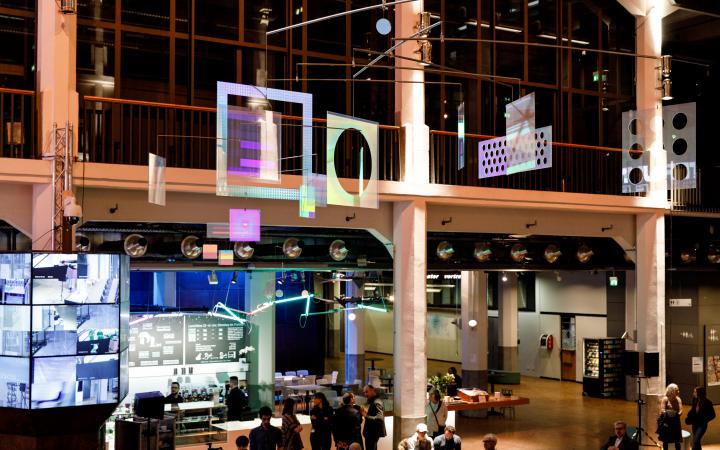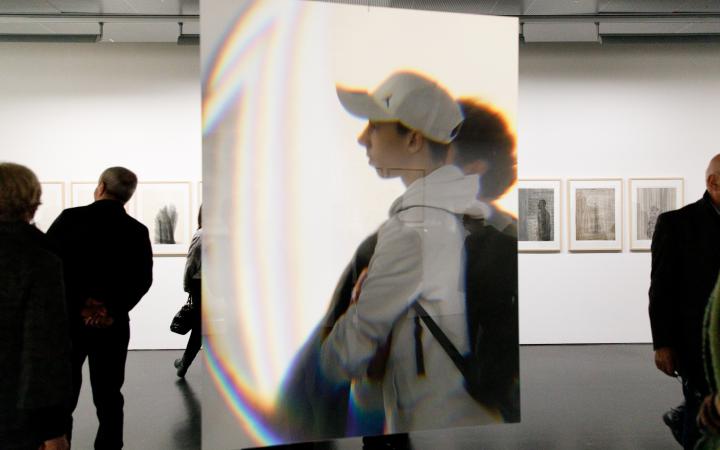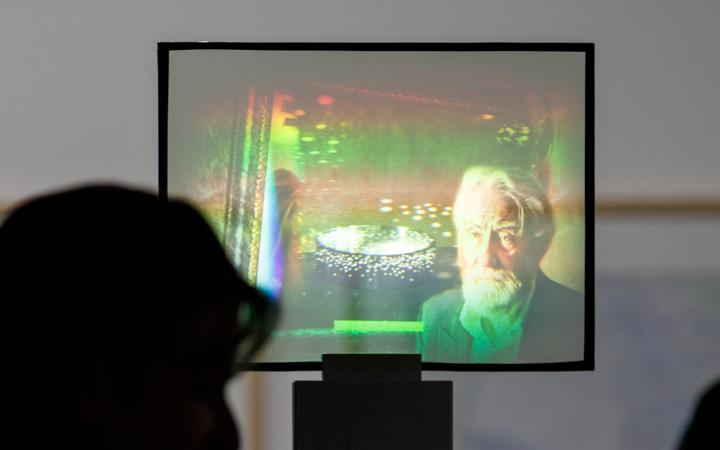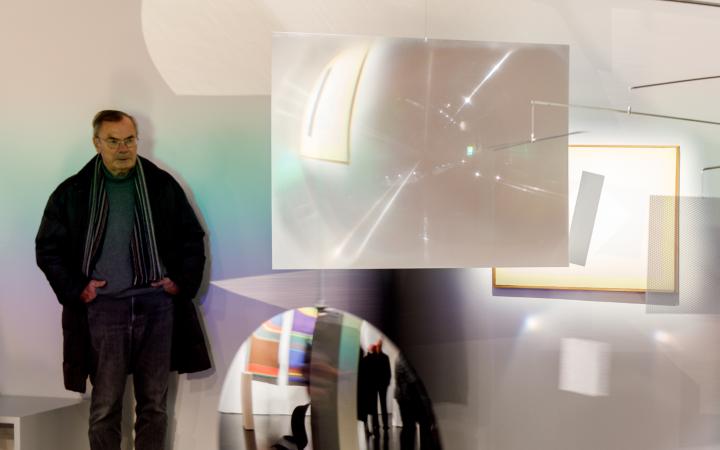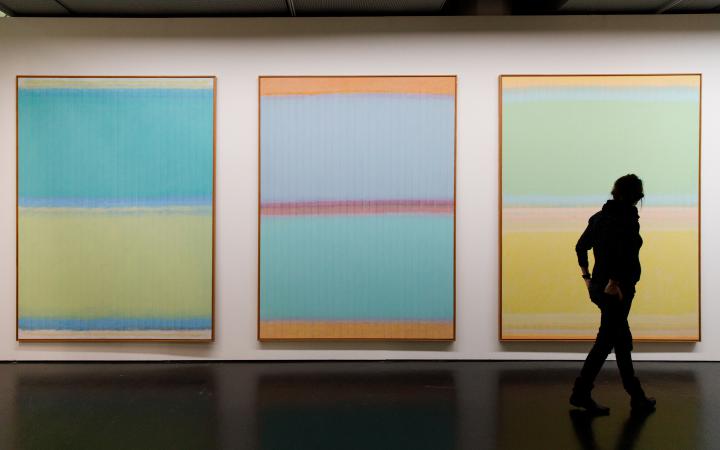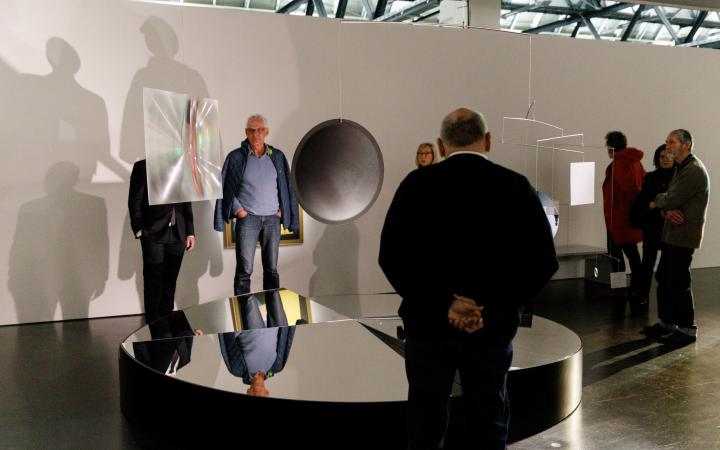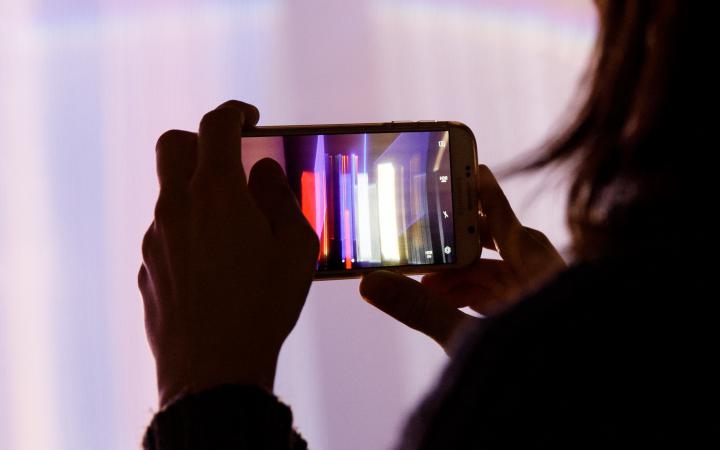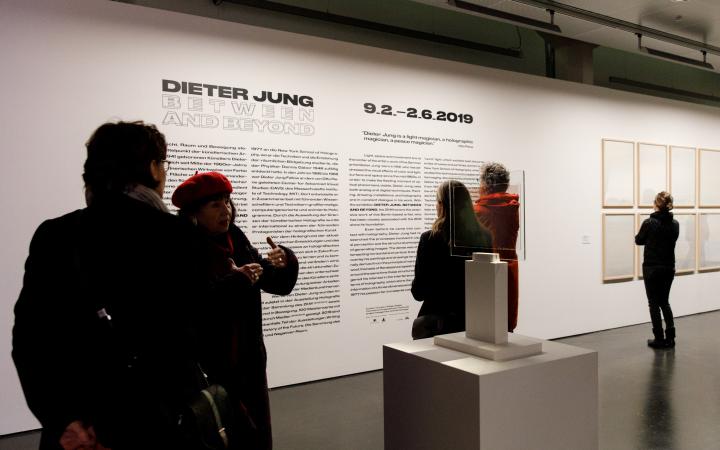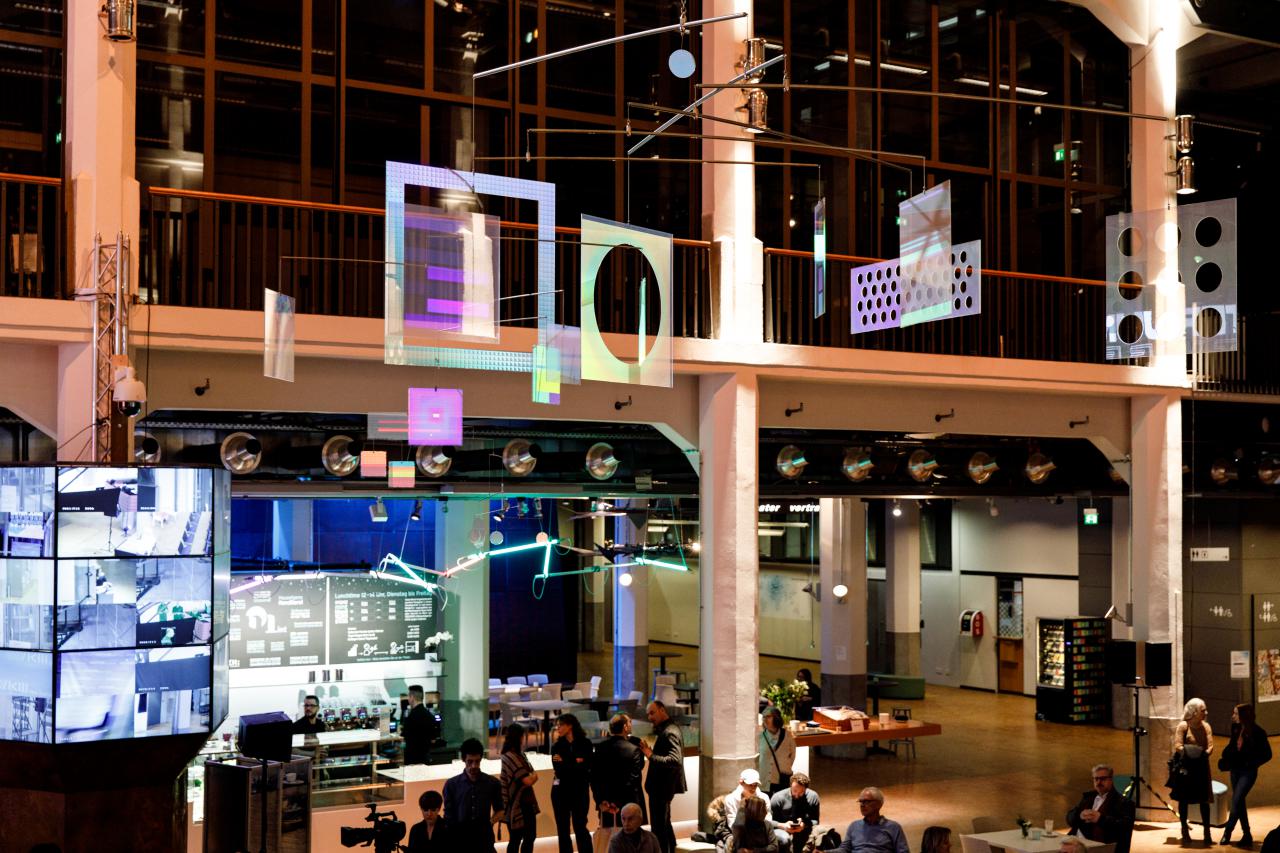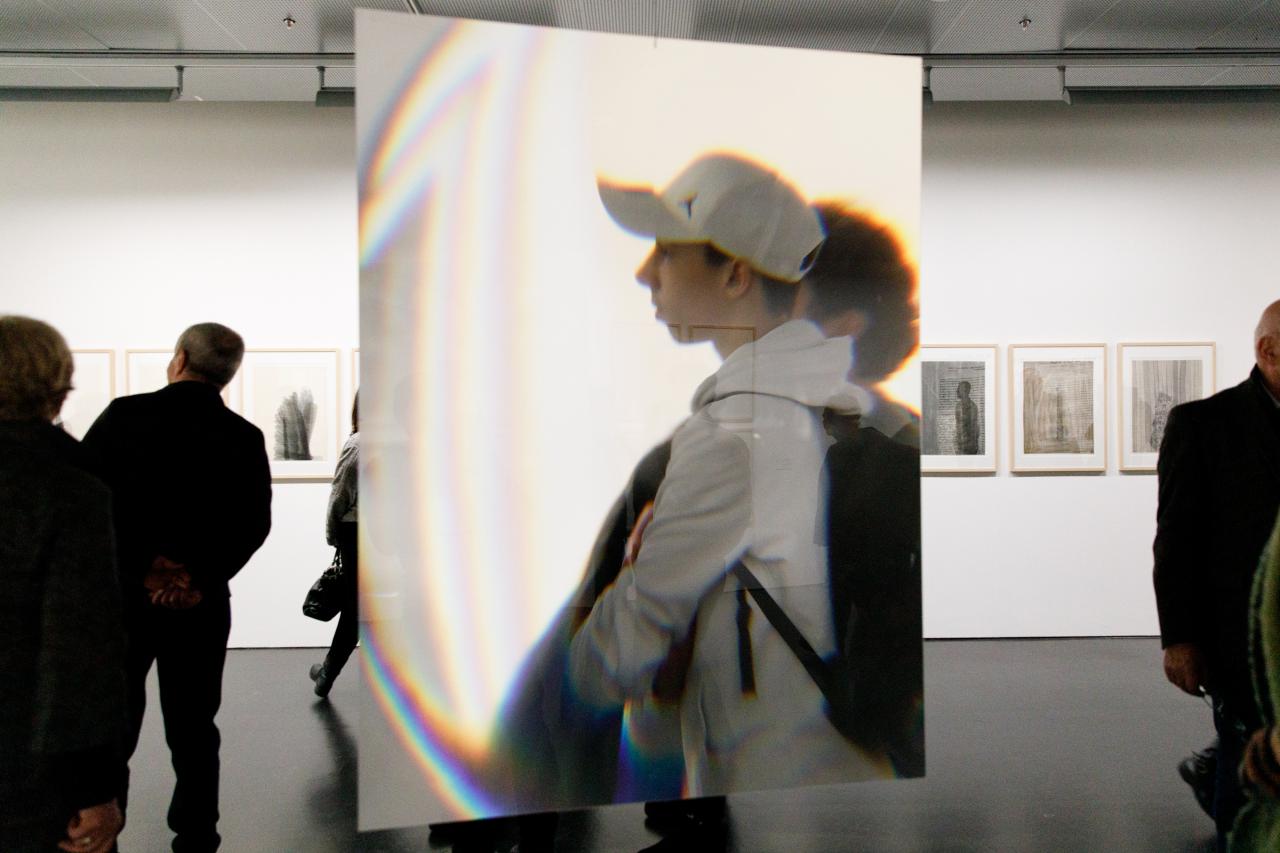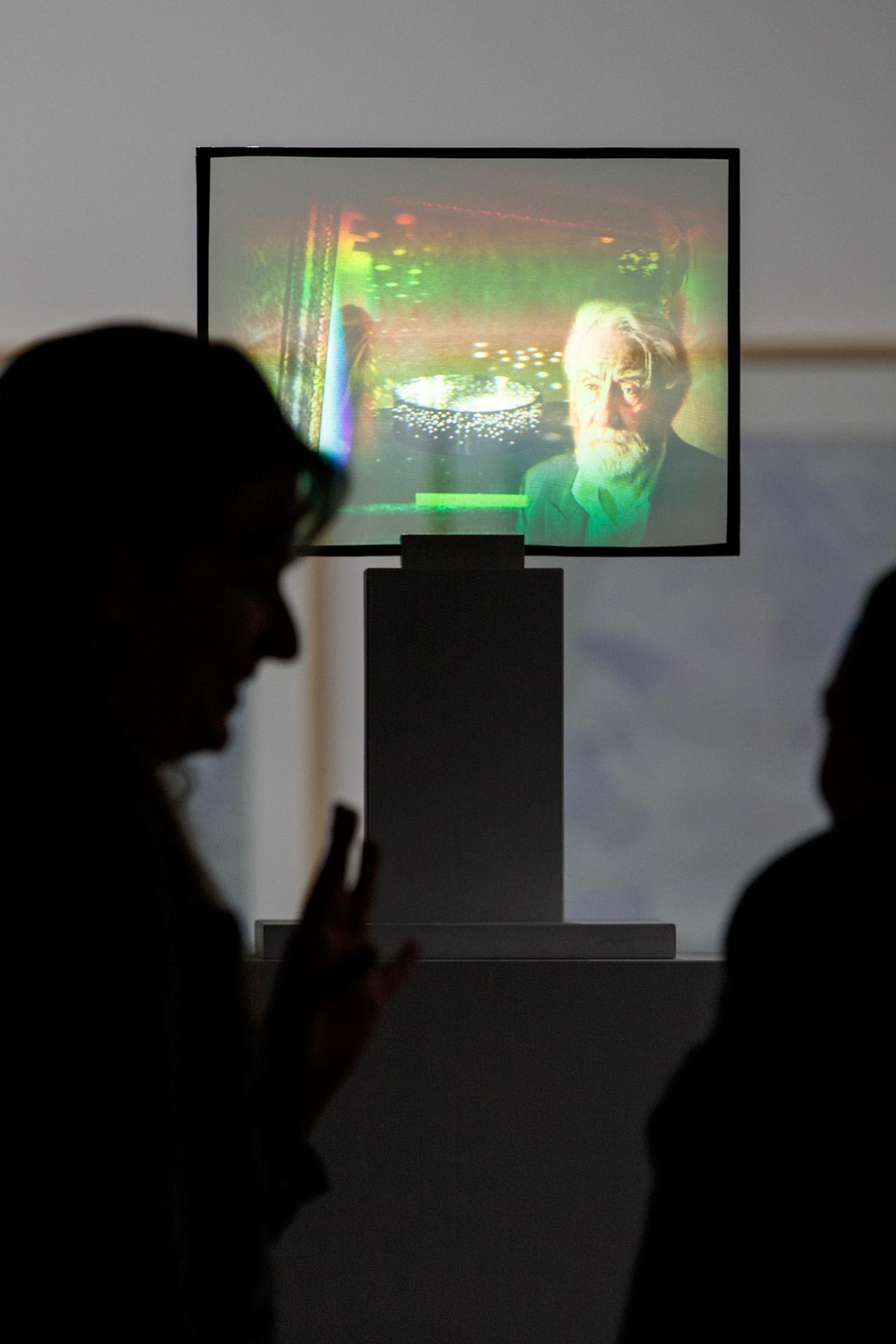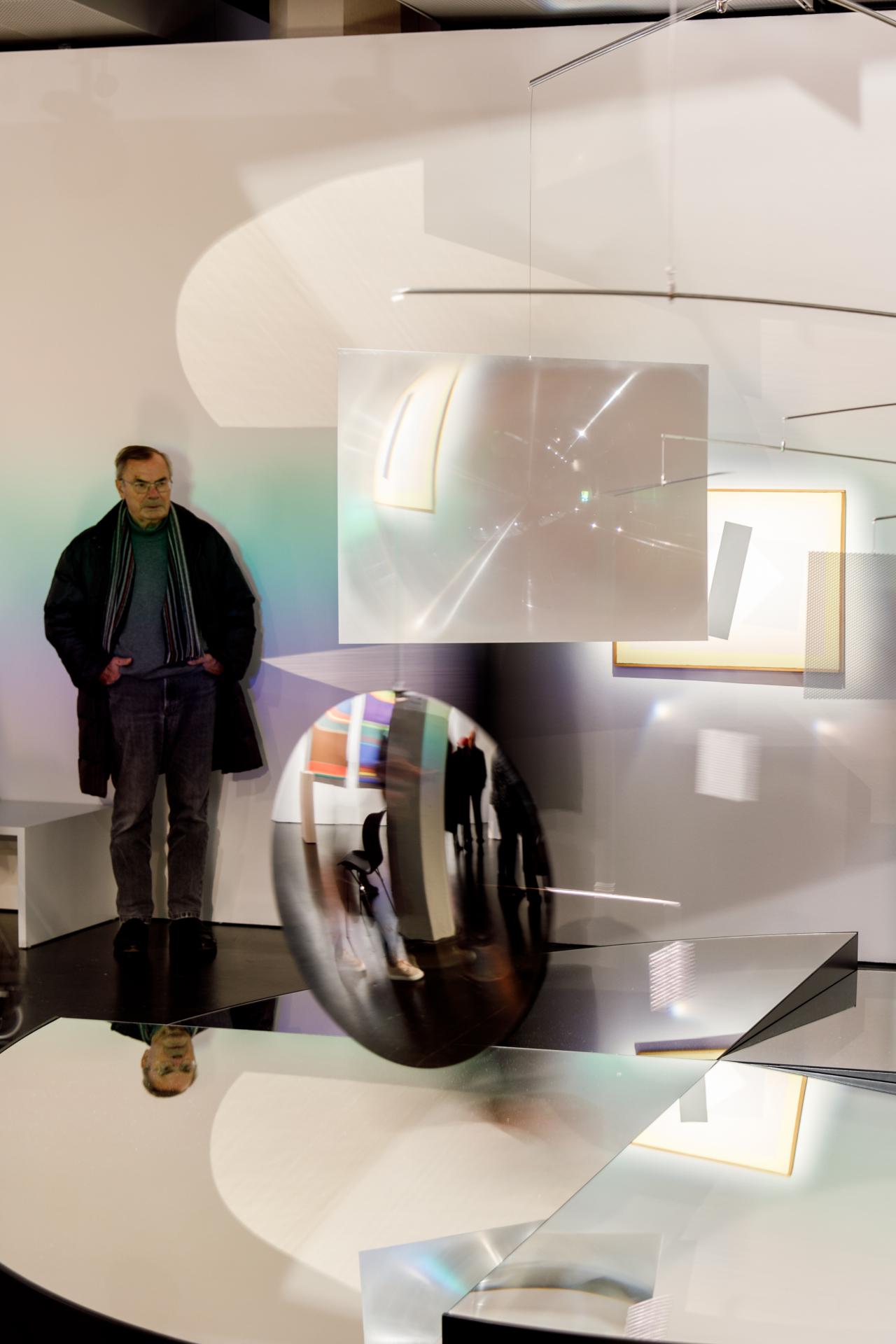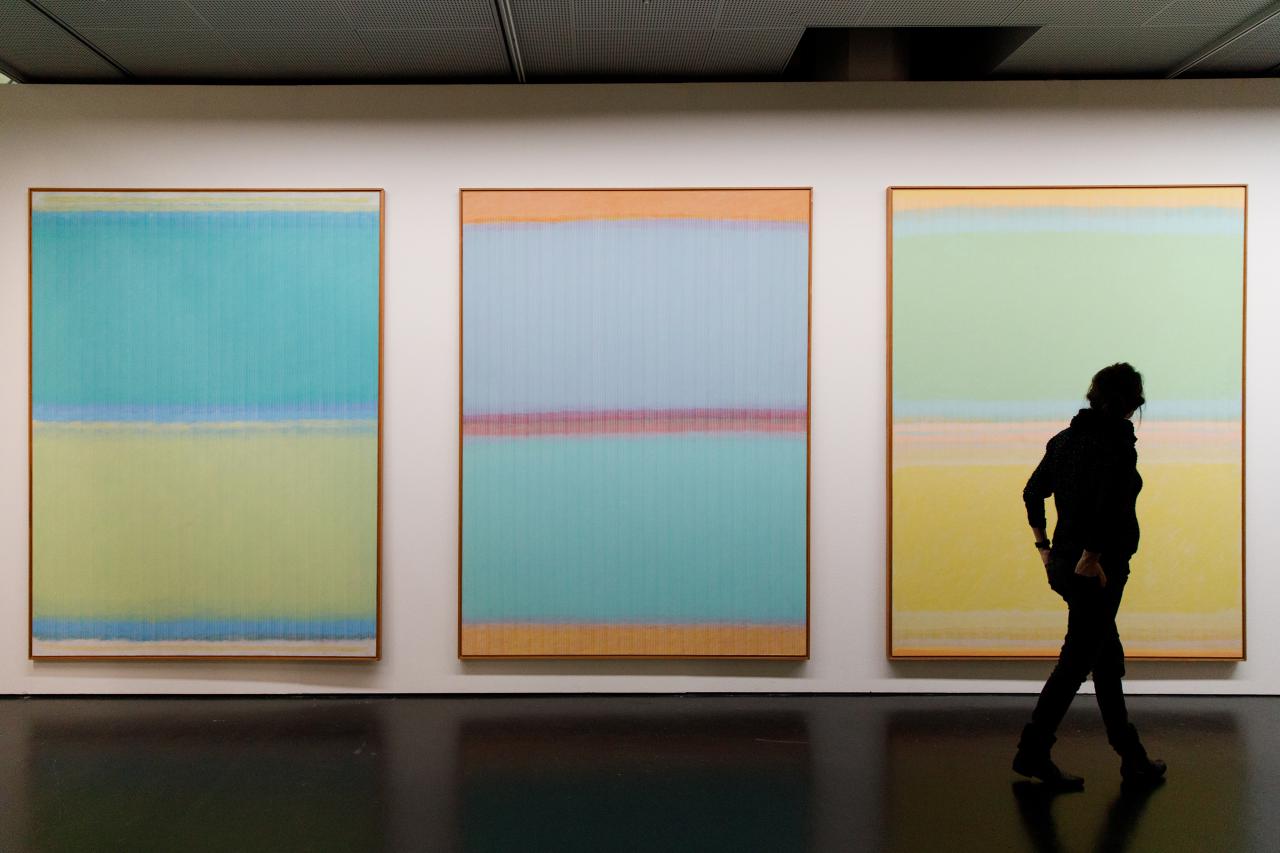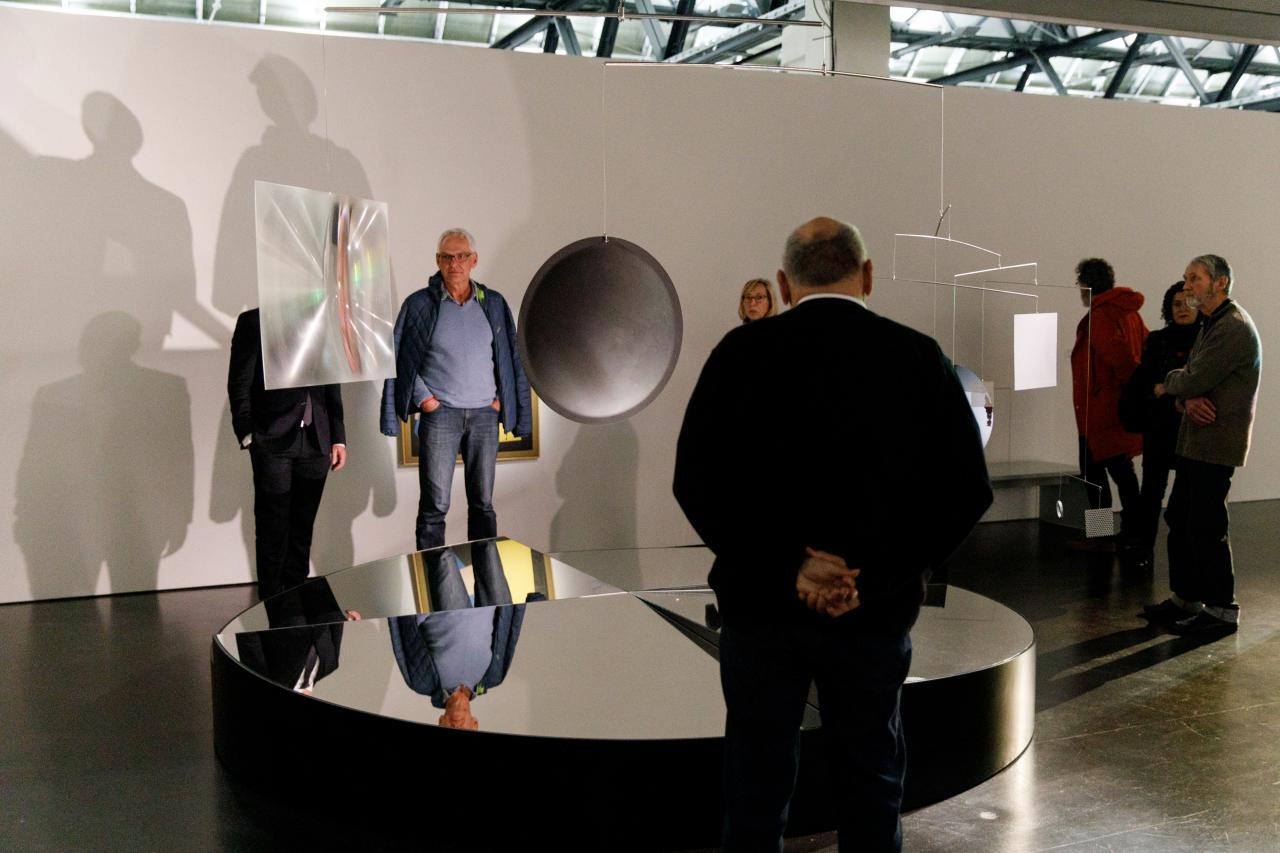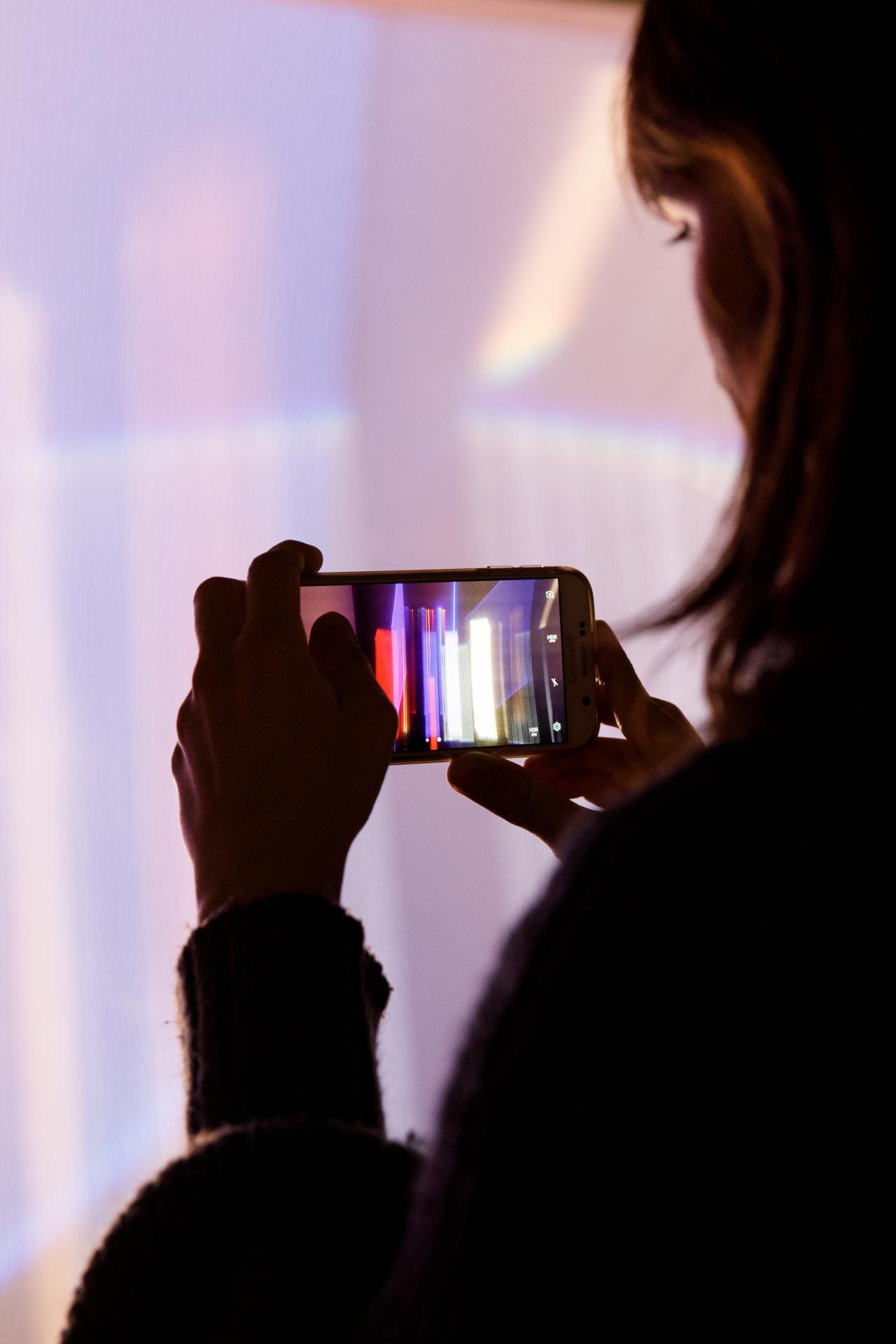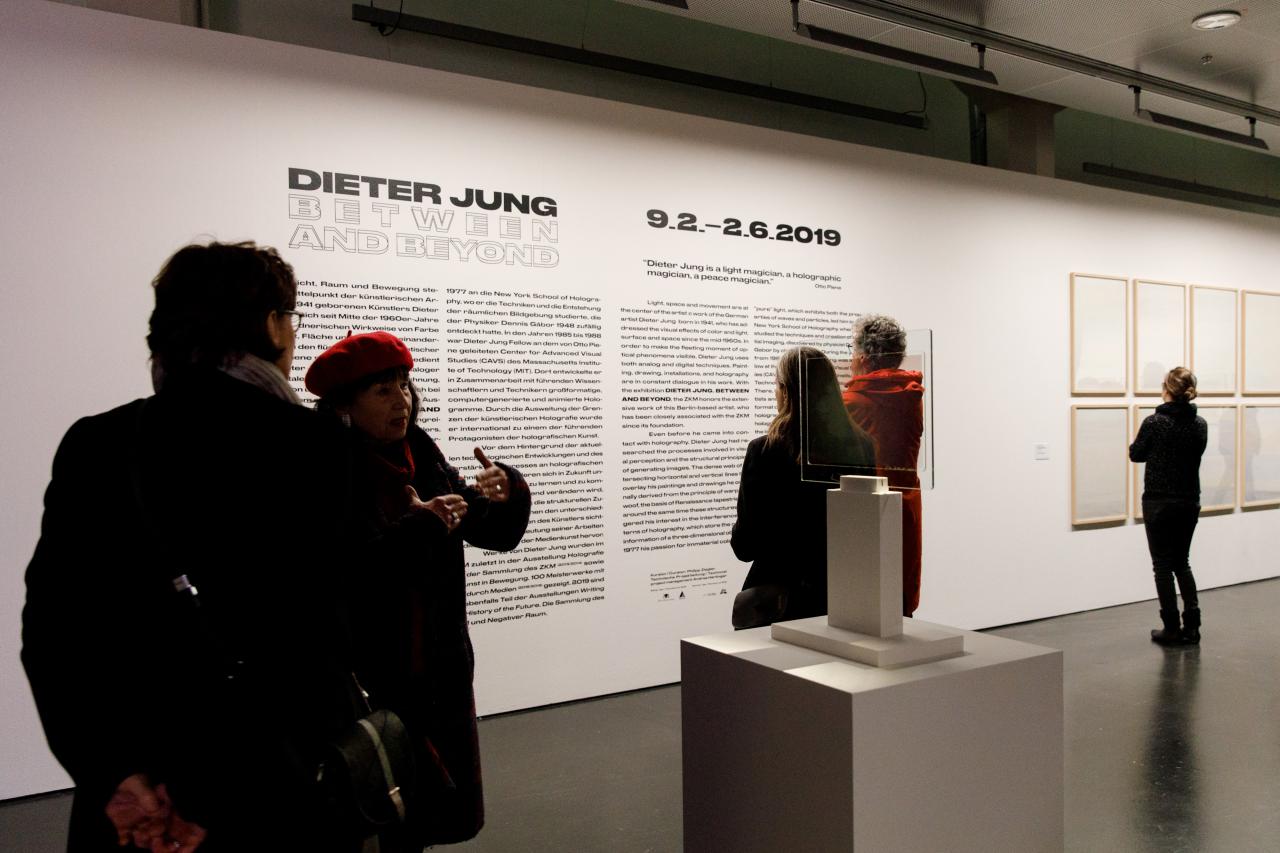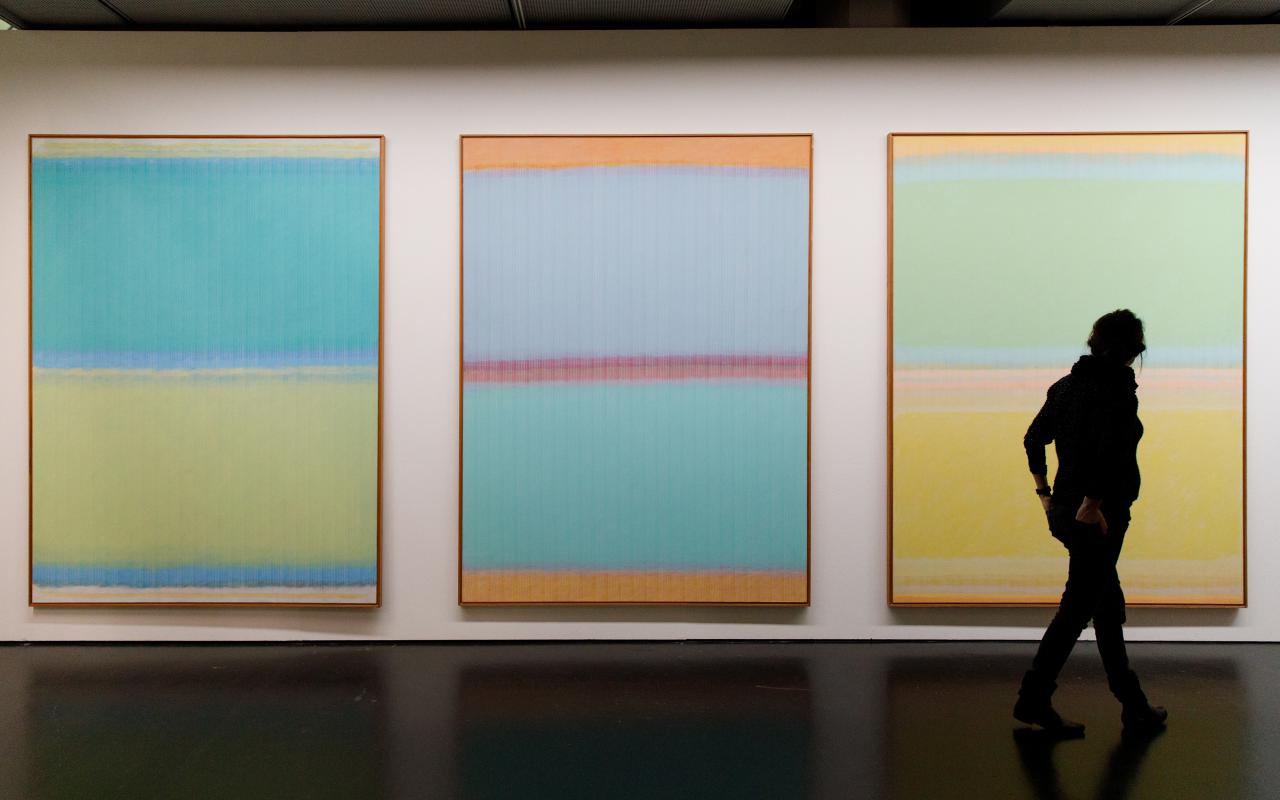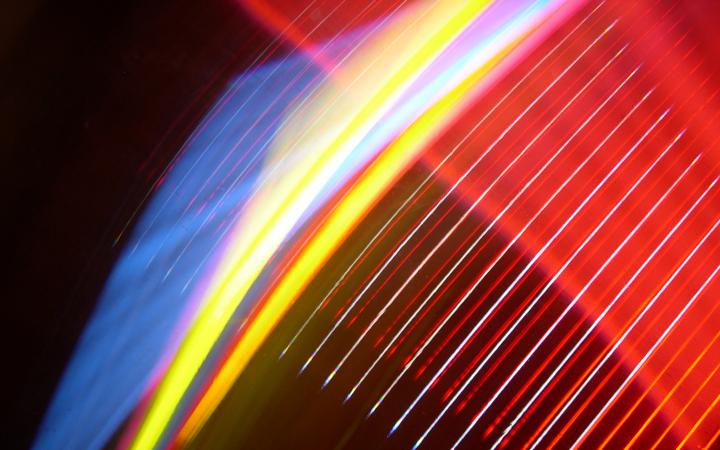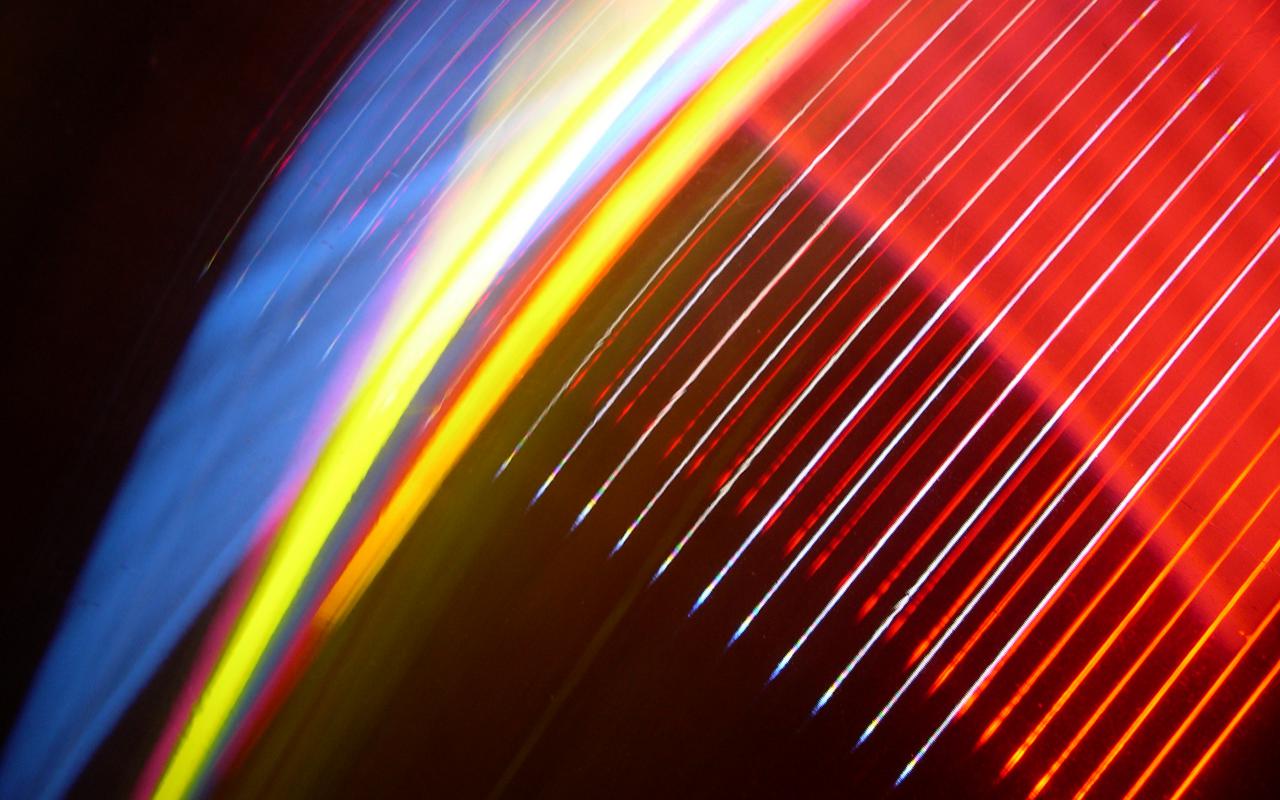
Light, space and movement are at the center of the artistic work of Dieter Jung, born in 1941, who has been dealing with the visual effects of color and light, surface and space since the mid-1960s.
In order to make the cursory moment of optical phenomena visible, Dieter Jung uses both analog and digital techniques. Painting, drawing, printmaking and holography are in constant dialogue in his work. With the exhibition Dieter Jung. Between and Beyond, the ZKM honors the extensive work of the Berlin-based artist, who has been closely associated with the ZKM since its foundation. In addition to holograms, holographic mobiles and holographic light spaces, the exhibition includes the artist's paintings, drawings and prints.
»Dieter Jung is a light magician, a holographic magician, a peace magician.«
Representation of Light and Reflections
Jung's interest in the process of visual perception, the dual quality of light as particles and waves and the technical structure of images has accompanied him since his studies at the Hochschule für Bildende Künste [Academy of Arts] in Berlin. Already in his first paintings he dealt with the representation of light and reflections. At the beginning of the 1970s, he painted a series of heads of well-known and unknown persons reminding of interference structures, in which the faces of Sigmund Freud, Ezra Pound and Friedrich Nietzsche are embedded in horizontally and vertically intertwining lines of oscillation, which, for Jung, initially made reference primarily to the textures of weaving art and the principle of warp and weft in the tapestries of the Renaissance.
Focus Holography
After studying holography at the New York School of Holography, Jung worked with leading scientists to develop a work that expanded the technical and artistic possibilities of holography, which the physicist Dennis Gabor discovered rather by chance in 1948, and made him one of the leading protagonists of holographic art internationally. For his first holograms Jung uses feathers found in 1977 in Central Park in New York, which float in space and cast their shadows as filigree objects in the holographic image. Subsequently he transferred the poems of Hans Magnus Enzensberger into the medium of holography, for which elaborate models had to be built in order to film them on a 360° turntable. In the series Into the Rainbow, Gegenwartsräume [Present spaces] and Inbetween Dieter Jung creates abstract color spaces in the early 1980s using the holographic one-step technique discovered by Stephen A. Benton, in which the pure colors of the rainbow float freely in space.
From 1985 to 1988 as a Research Fellow at the Center for Advanced Visual Studies (CVAS) at MIT in Cambridge, MA, directed by Otto Piene, Dieter Jung had extensive technical possibilities at his disposal with which he could explore new holographic methods for the replacement of the holographic image from its inherent object. In close exchange with scientists, the first computer-generated motion holograms are created there, in which enormous amounts of data were mastered for the time.
Holography today
Due to the rapid development of digital technologies, holography has once again become the focus of attention. Currently, researchers are working on the development of holographic displays with which our way of working, learning and interacting will change fundamentally. Especially the latest developments in photonics, in which individual light particles become information carriers, revolutionize the technical requirements of holography to an unprecedented extent. In the near future, holographs may be projected freely in space as three-dimensional mixed reality applications, thus cutting off the binding of the holographic representation to its carrier materials. By floating the image in space, the ideas of Dieter Jung and other pioneers of holography, on which they have been working with their works since the 1960s and 1970s, would ultimately be fulfilled.
- Credits
- Philipp Ziegler (Curator)
- Organization / Institution
- ZKM | Karlsruhe
